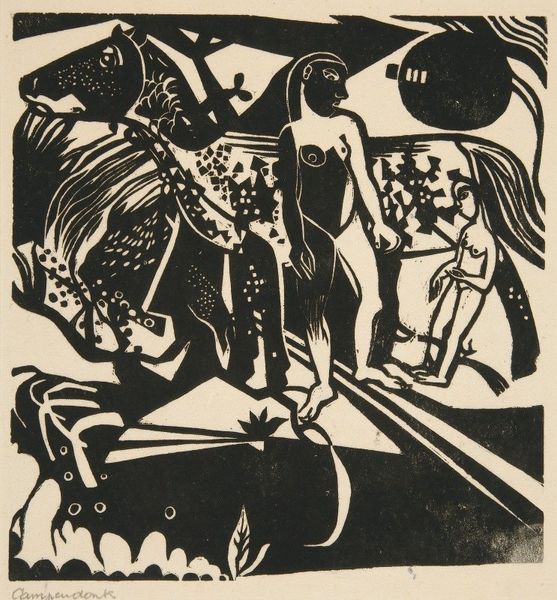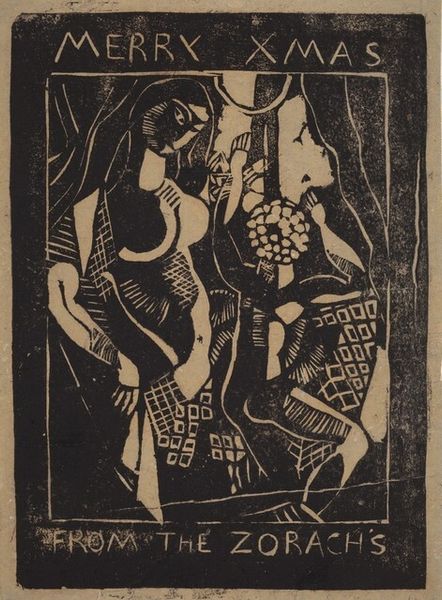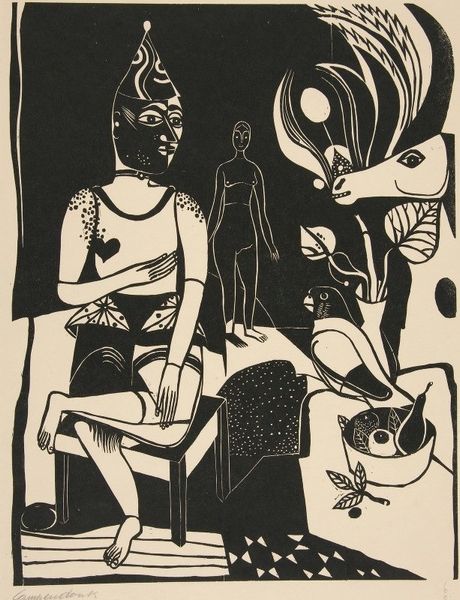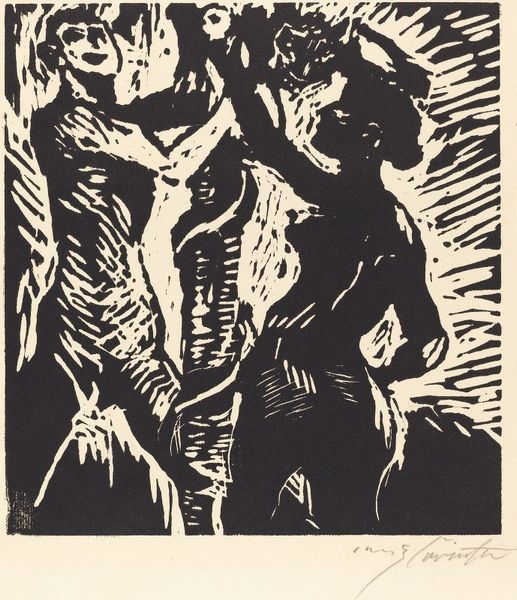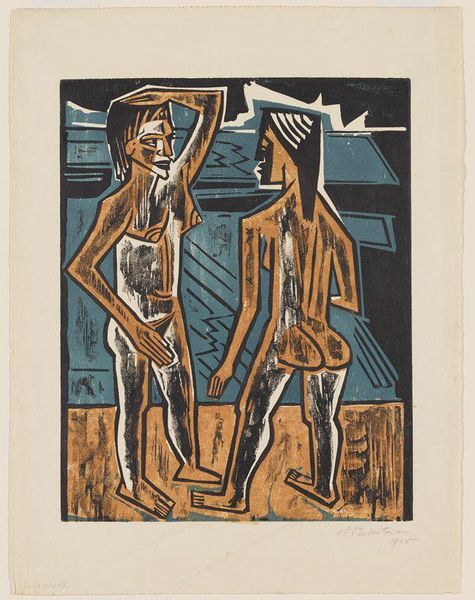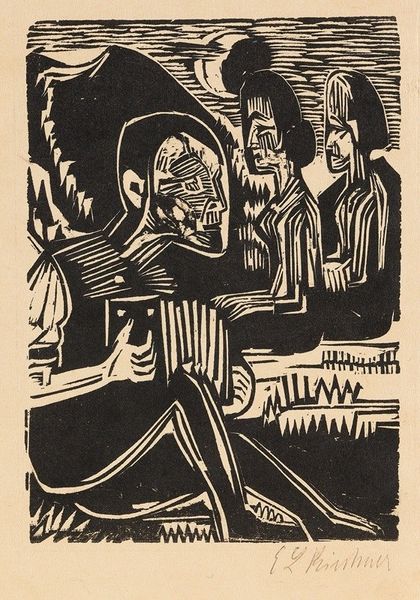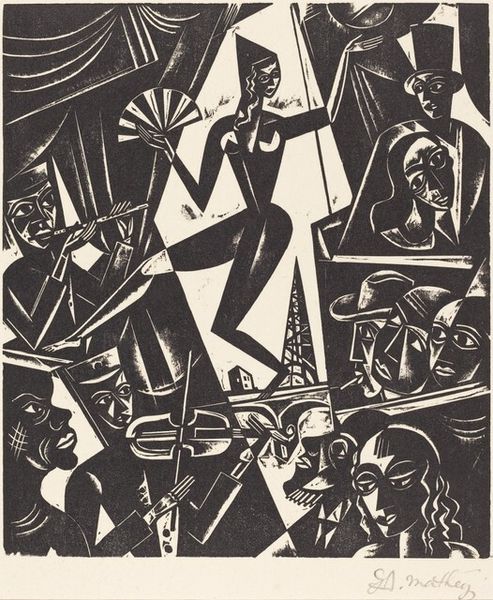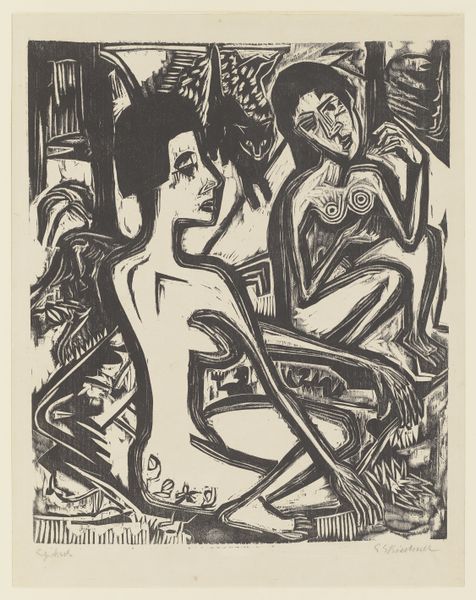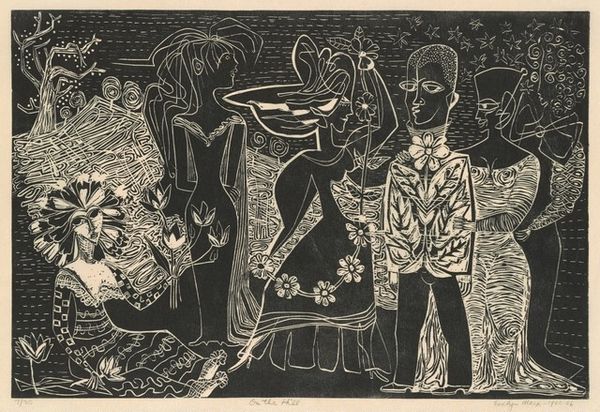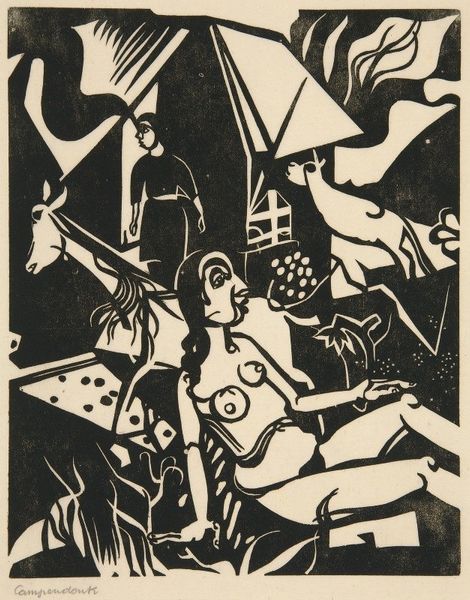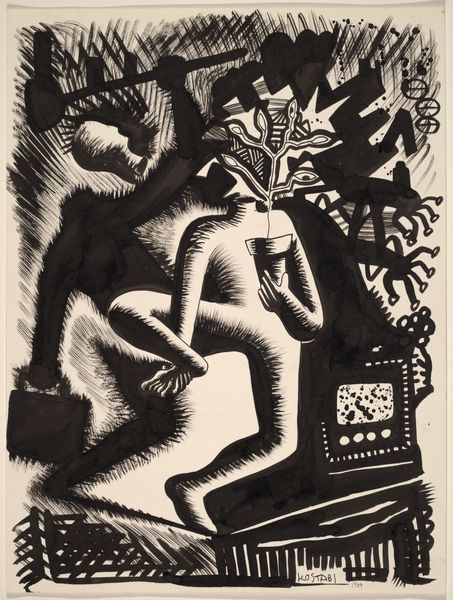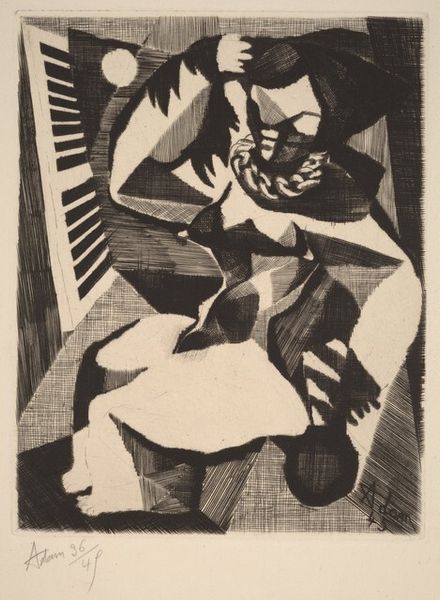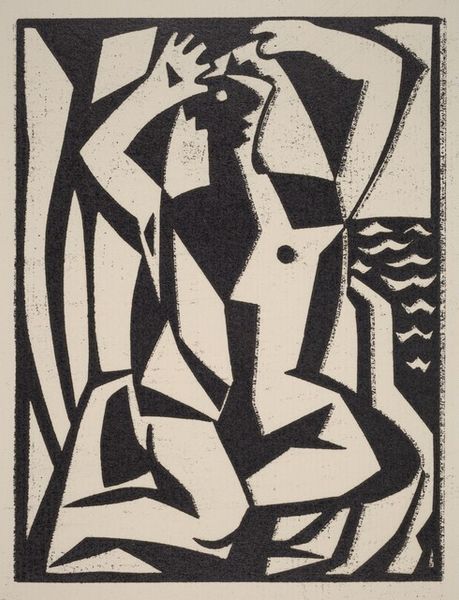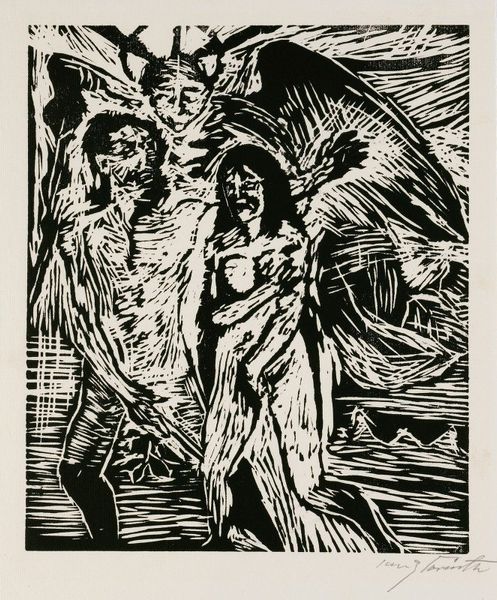
mixed-media, print, woodcut
#
mixed-media
# print
#
figuration
#
ink line art
#
black-arts-movement
#
woodcut
Dimensions: image: 33.3 × 25.5 cm (13 1/8 × 10 1/16 in.) sheet: 44.2 × 33.8 cm (17 3/8 × 13 5/16 in.)
Copyright: National Gallery of Art: CC0 1.0
Curator: This powerful woodcut and mixed media print is titled "Musician and His Lady" by Dindga McCannon, created in 1972. What are your first impressions? Editor: The immediate impact is its starkness, its pure black and white contrast. The texture achieved is surprisingly rich given the limited palette, and there's a kinetic energy in the angular lines. It's visually loud. Curator: I agree. McCannon brilliantly manipulates the negative space. Note the dynamism generated by the relationship between the solid forms and the areas carved away; observe how the shapes inform our perception of the subjects and the implied setting. Editor: Considering its material execution, it's a striking example of democratized art-making. Woodcut as a form is accessible, emphasizing the labor and process. Was this aligned with McCannon's aims regarding audience or the artwork's availability? Curator: Absolutely. McCannon's involvement in the Black Arts Movement underscores this reading. Her stylistic choices serve a purpose: this direct, bold figuration challenges the dominance of certain art historical narratives and amplifies Black voices and experiences. The work refuses to be ignored, conceptually or formally. Editor: It's intriguing to see how the aesthetic decisions like this all-over composition mirror broader themes. The jagged edges around the musician remind one of electrical currents – energy, sound, but also the vital pulse of Black creativity during this period. The title, “Musician and His Lady,” almost feels secondary to this potent visual language. Curator: Precisely, this focus encourages us to contemplate beyond the subjects' literal depiction. How does the composition reflect broader social and political dynamics, for instance? And how does the deployment of line invite interpretations? Editor: This makes you reconsider printmaking less as mere reproduction, and more a conscious vehicle for distributing culturally and socially charged images. This pushes the notion of accessibility and broad participation further in dialogue. Curator: Yes. And on close inspection, consider that this isn't solely about the ‘what,’ it’s deeply embedded in the ‘how.’ Editor: Exactly. Its bold execution and purposeful creation through labor-intensive materials are completely captivating.
Comments
No comments
Be the first to comment and join the conversation on the ultimate creative platform.
